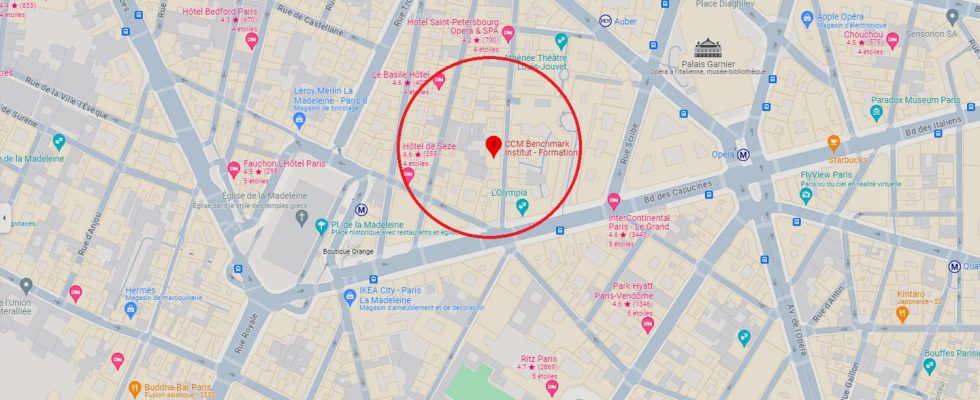For several days now, Google has no longer displayed clickable maps from Maps in its results when you search for an address or location. Rest assured, this is not a bug but a new measure.
You may have noticed this strange phenomenon for several days. When you enter a postal address or the name of a place directly into the Google search engine field, a simple map appears at the top of the results in the form of a non-clickable image. Previously, it was possible to click on it to access the American giant’s mapping service to locate the address indicated on a map and to define, for example, a route to get there. But not anymore. Bug or technical problem?
Neither. There’s no point in trying to click on this image, nothing will happen and it’s completely voluntary. Google is simply starting to comply with the DMA (to Digital Markets Act, law on digital markets), the new European regulation which comes into force on March 6, 2024. Google (and its parent company Alphabet) is not the only one to have to comply with the new requirements of European law. Tech giants like Microsoft, Amazon, Meta (Facebook, Instagram, WhatsApp, etc.), ByteDance (TikTok) and Apple are also being asked to fall into line. For Apple, for example, this will result in the obligation to open its iPhones to app stores other than the App Store.
The European Commission’s DMA aims, among other things, to limit anti-competitive practices. In fact, tech players can no longer prioritize their own services even within the products and services that belong to them. In the case of Google and Google Maps, the tech giant can no longer highlight its Google Maps service in a query made in its search engine to the detriment of other online services such as Bing Maps (Microsoft), Mappy, etc. As a result, Google is only allowed to display a simple map image (from Google Maps all the same) at the top of the results but the map is no longer interactive as before. This is certainly less practical for Internet users but rather beneficial for guaranteeing a certain fairness between the different tech players.
The DMA does not, however, imply a pure and simple ban on communication between the different services of the same group. It is possible, when you are connected with your Google account, to share information again between the company’s different services. This is in fact a sort of consent signed with Google in which you authorize it to associate different services offered such as Search (the search engine) and Maps or YouTube for example. However, this does not affect the presence of an interactive map in Google search results. By going to the page Associated services and by checking the Search and Google Maps boxes, you simply authorize Google to retrieve the addresses entered in its search engine to include them in the Google Maps history.
The simplest method is to no longer enter postal addresses in the Google search engine but directly in Google Maps. This is the quickest way to obtain a card and also the one recommended by the American giant. If you use Google Maps frequently, we therefore invite you to place an easily accessible favorite in your web browser.

